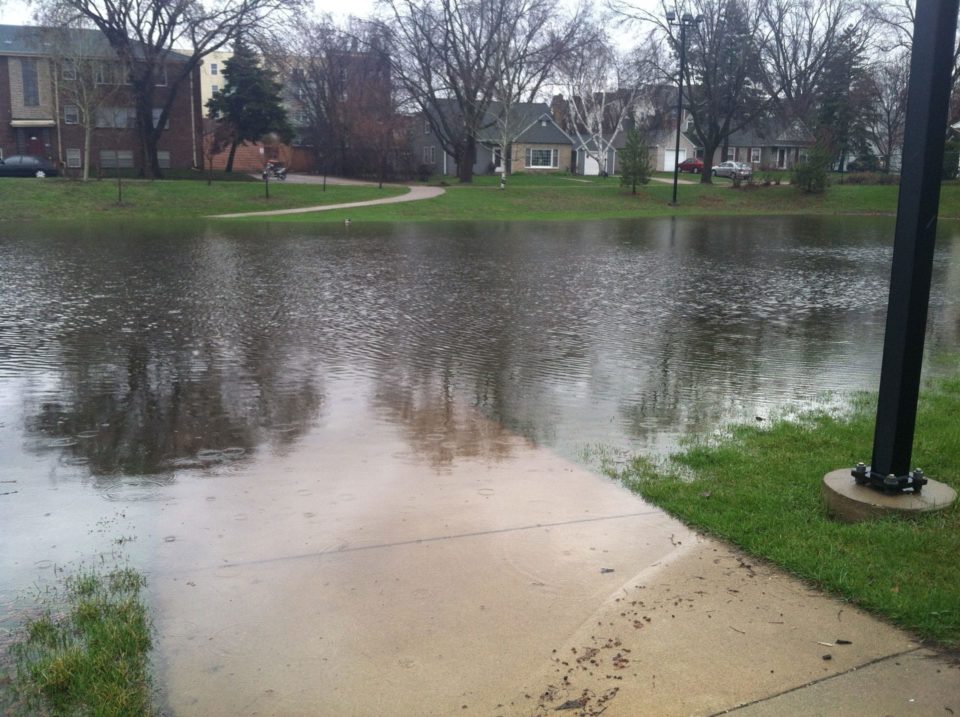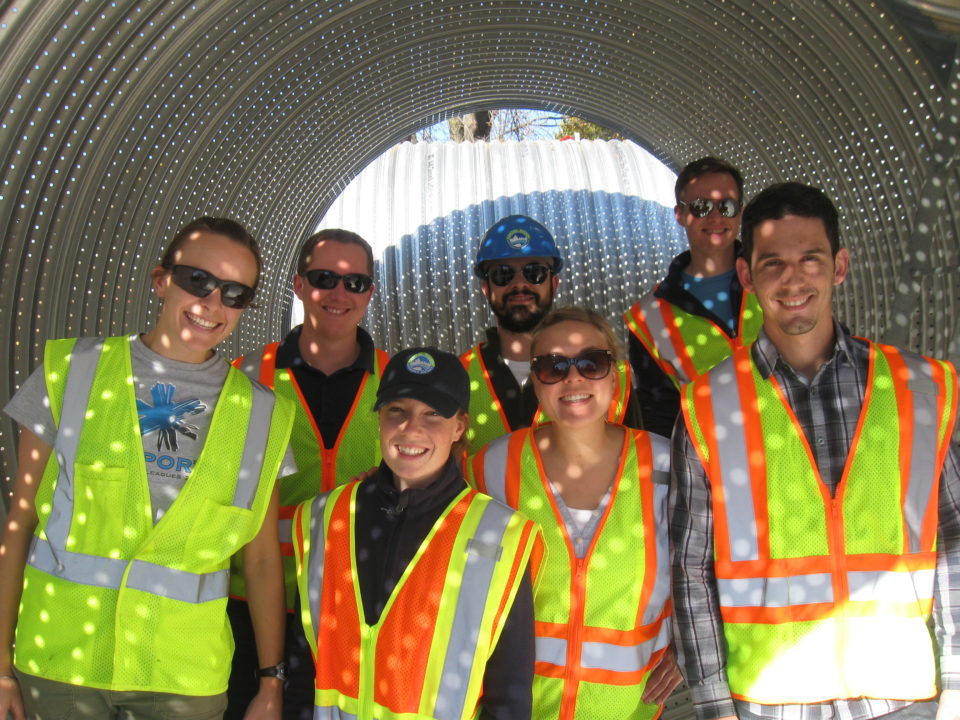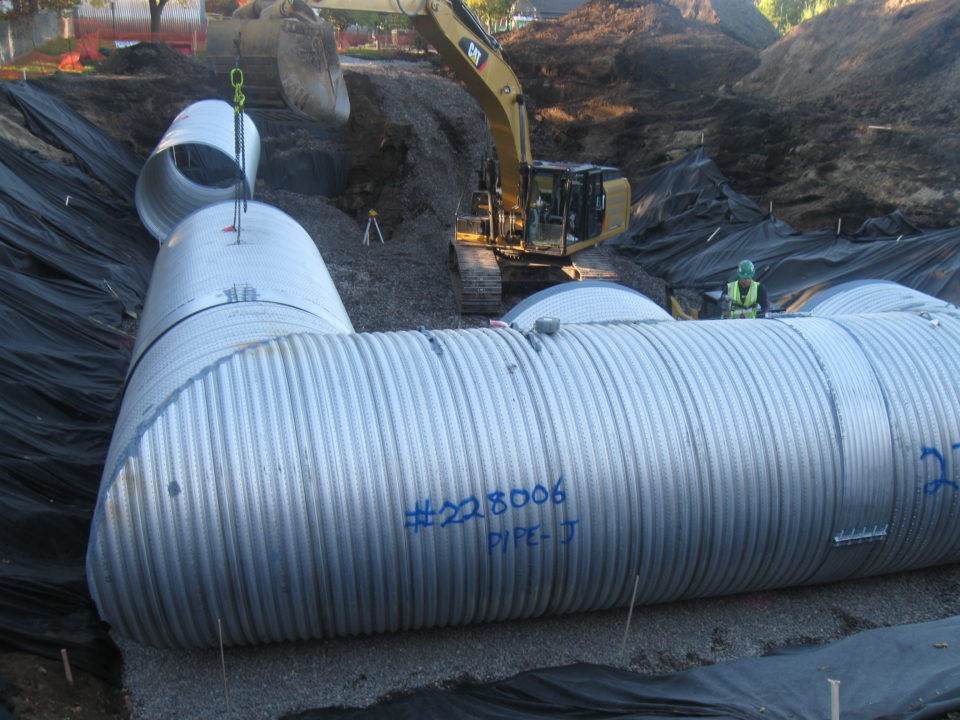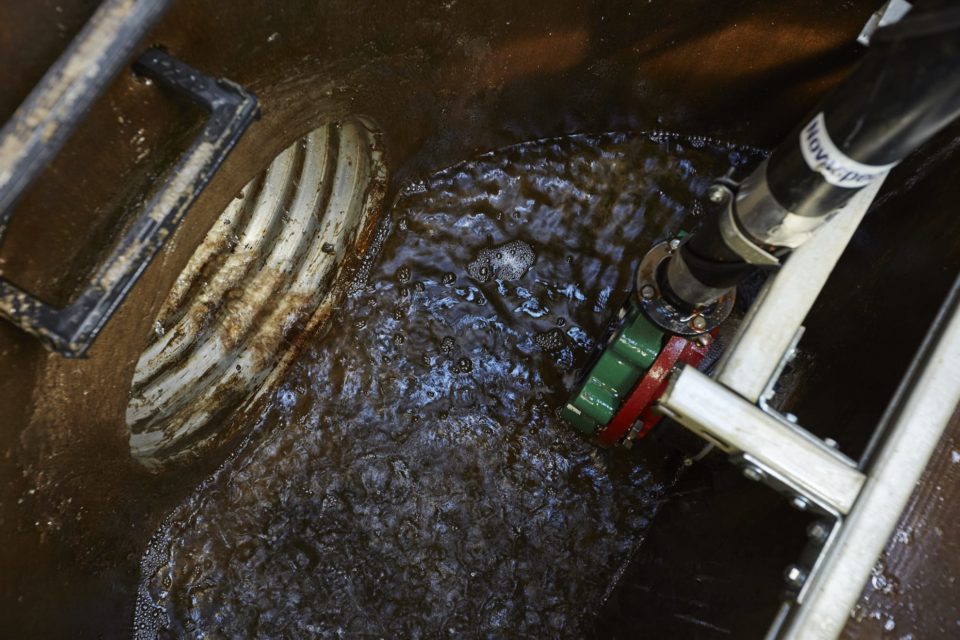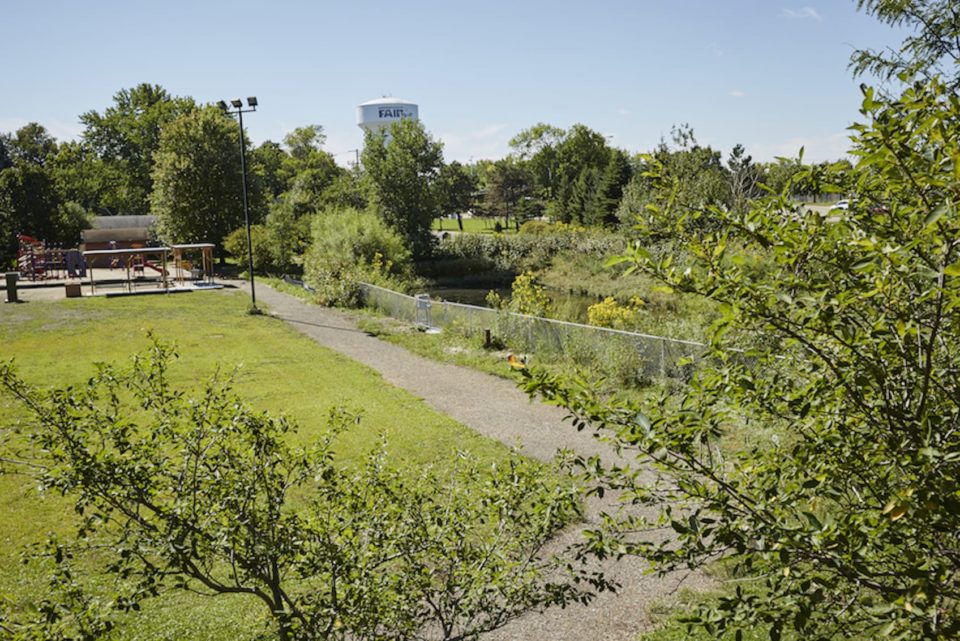The Solution
After three years of study, planning, and design, a 390-foot network of 10-foot diameter perforated pipe was installed beneath Curtiss Field. The pipes are fed by overflow from the pond, and stormwater is delivered there to percolate into the ground. The system reduces flooding in the park and the risk of damage to surrounding properties. CRWD and the City of Falcon Heights also installed a forecast-based control system – called OptiRTC (Real Time Controller) – in Curtiss Pond.
The system monitors National Weather Service data through an internet connection. When the system detects a large amount of rain approaching, it opens a valve that drains the pond of previously collected water, lowering it as much as two feet to create space for more stormwater. At any time, staff can monitor the system and remotely modify water levels in the pond. The OptiRTC controller works with an underground stormwater infiltration system designed and installed by CRWD and the City of Falcon Heights.
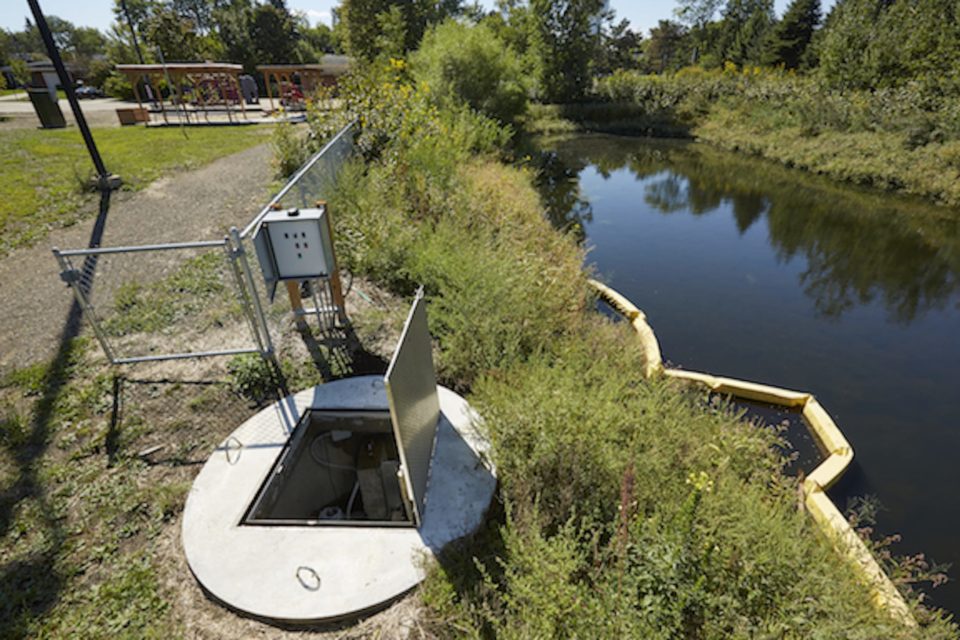
A weather forecasting system lowers the pond level before storms to allow more space for new rainwater.
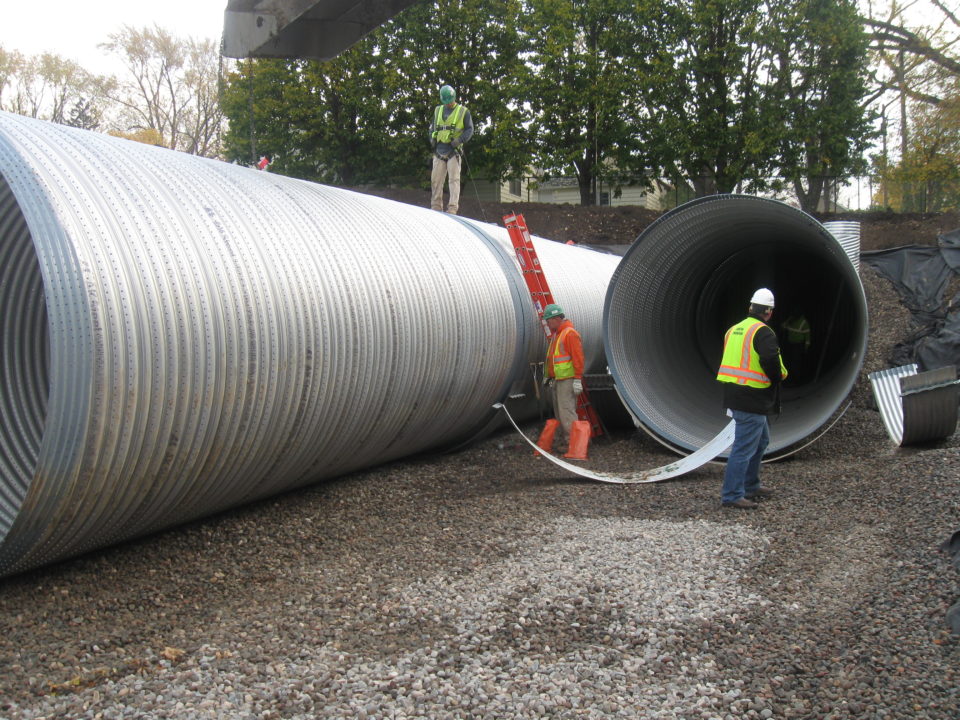
10-foot diameter perforated pipes were installed under the field to allow water to slowly seep into the ground.

